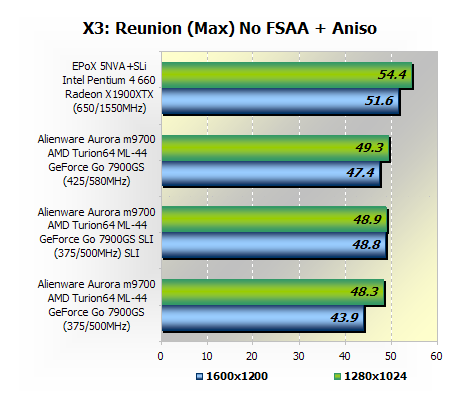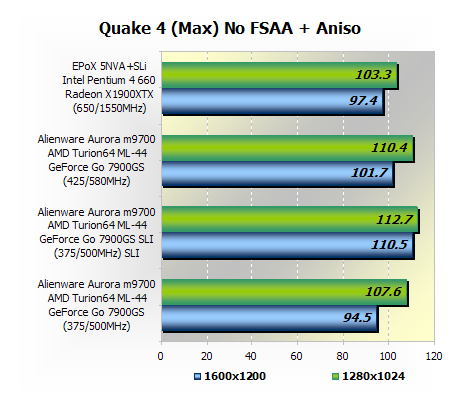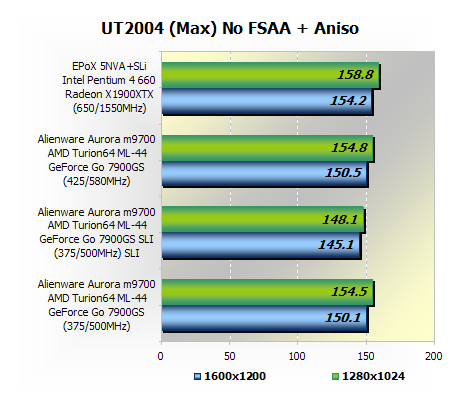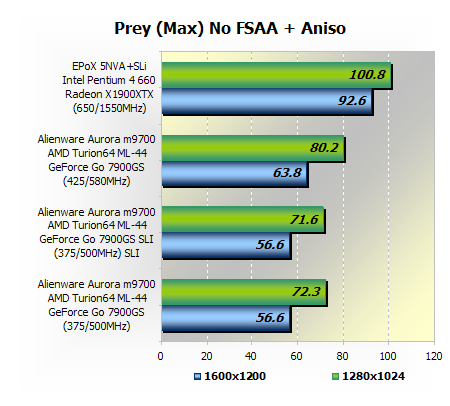Real-World Gaming

Despite all the synthetic testing, the first real-world test "X3: Reunion" puts a very positive spin on the whole situation. Here the mighty Aurora m9700 is just 9% slower than the test system, which uses the most powerful ATI graphics card currently available. Given that X3 also generally seems to favor ATI cards over NVIDIA cards this is a very good result for the notebook. However, SLI once again did very little for the Aurora m9700, giving it nothing over the single card configuration at 1280x1024, and just an 11% performance gain was seen at 1600x1200. Once again this is another obvious sign of processor bottlenecking.

While X3 may be more ATI friendly, Quake 4 certainly is not. As a result the powerful desktop system was defeated by the Aurora m9700, which is a huge achievement for the notebook. The SLI enabled configuration was really no faster at 1280x1024, yet is was roughly 17% faster at 1600x1200. Overclocking the single GeForce Go 7900GS bridged the performance margin to just 9%.


UT2004 creates no real challenge for either the Aurora m9700 or the desktop test system, so there is nothing really worth reporting there.
Despite the fact that the Quake 4 results favored the Aurora m9700, the Prey results went very much the other way. This is surprising given Quake 4 and Prey both use the Doom 3 engine. Nonetheless, while the Aurora m9700 did deliver good playable performance, the desktop system did cream it. The overclocked single card put up the best fight as it was 14% quicker than the SLI configuration at 1600x1200.